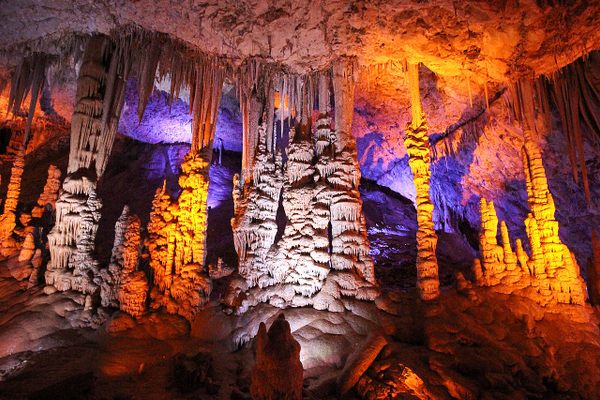About
Though from space it looks like an impact crater or the remnants of an ancient volcano, the Kondyor Massif, in Russia, is neither. Rather it is in what's known in geological terms as an "intrusion." An intrusion forms when molten magma of igneous rock crystallizes below the surface of the earth, in this case, forming a perfectly circular rocky ring over a billion years ago. (Because they form underground, intrusions are also known as plutons, named for Pluto, the Roman god of the underworld.) Harder then the rest of the earth around it, the Kondyor Massif intrusion (in this case an alkaline-ultrabasic massif intrusion) has slowly made its way through 5000 miles of mantle and is now visible on the surface of the earth. A stream flows out from its center, fueled by the snow waters melting from the Kondyor Massif's 2000-foot-high rim.
The Kondyor Massif intrusion, exposed over time by eons of erosion, lies in the Russian Far East, roughly southwest of Okhotsk and southeast of Yakutsk, mostly in the drainage basin of the lower Amur River in Khabarovsk Krai, a federal subject of Russia.
The intrusion is huge, five miles in diameter, and it occupies a vast mountainous area along the coastline of the Sea of Okhotsk, an arm of the Pacific Ocean. The Kondyor Massif is an important source of platinum and is the site of a massive Russian platinum mine. Last year alone over 4 tons of platinum were mined there, a tremendous amount of a relatively rare metal. Gold is also found in the Kondyor Massif, and occasionally gold encrusted platinum crystals are found, a sort of natural geological jewelry. (These can actually be purchased from various mineral dealers.)
The Kondor Massif even has its own special mineral known as Konderite, a mixture of copper, platinum, rhodium, lead, and sulfur. Evidence of the unique geological events that created the Kondor Massif.
Related Tags
Published
September 11, 2009
















